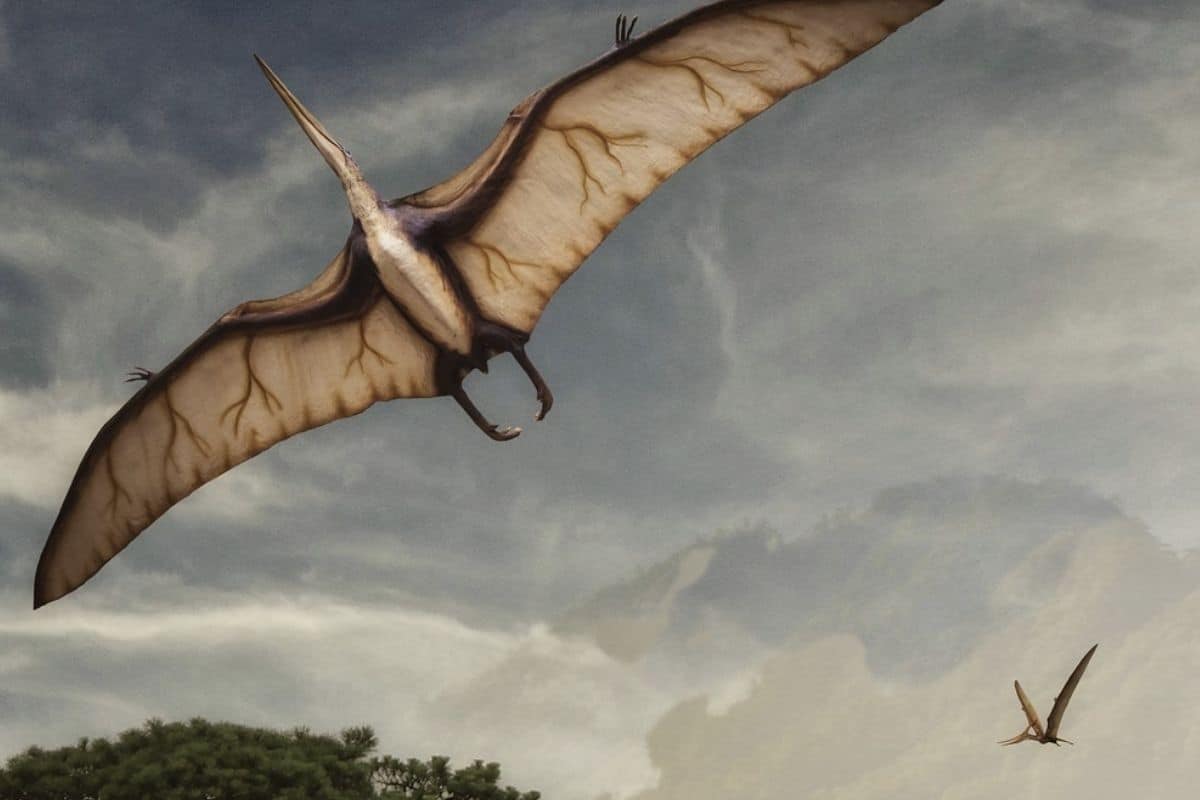

The flying reptile had a wingspan of more than 2.5 meters!
The fossil remains of the pterosaur were excavated in 2017, extensively studied in recent years and now described in the journal Current Biology† And then it turns out that we are dealing with a very special flying reptile here. This appears to be a new species. In addition, the remains of this pterosaur are very well preserved. And that allowed researchers to accurately determine the wingspan of this flying reptile and subsequently concluded that it is the largest Jurassic pterosaur discovered to date.
Skye
The new species is named dearc sgiathanach got, which means something like ‘winged reptile’. The pterosaur was found a few years ago on the Scottish island of Skye and is – for an organism that died about 160 million years ago – still in very good condition. And that in itself is quite remarkable, explains researcher Natalia Jagielska. “In order to fly, pterosaurs had hollow bones with thin walls. This makes their remains very fragile and unsuitable for being preserved for millions of years in a row. And yet this skeleton of an animal that died about 160 million years ago is in near-perfect condition and virtually complete. The sharp teeth with which the pterosaur retrieved fish from the water are even covered with a shiny glaze, as if the pterosaur had been alive just weeks ago!”
Big boy
Further research into the fairly complete pterosaur also shows that it must have been quite a large specimen. The researchers estimate that D. sgiathanach had a wingspan of about 2.5 meters. And that too is special. Previously it was assumed that pterosaurs in the Jurassic did not reach such an impressive size.
Chalk
Faded with a wingspan of 2.5 meters D. sgiathanach in the pterosaurs that in the later Cretaceous above the heads of dinosaurs such as the T. rex flew. Previous finds have shown that the pterosaurs in the Cretaceous period grew much larger and sometimes even grew into reptiles with airplane-like proportions (think wingspans of up to 12 meters). However, it was assumed that the pterosaurs only started a growth spurt in the Cretaceous and that they were all much smaller in the preceding period. Incomplete skeletons of pterosaurs found in England already seemed to challenge that assumption, hinting that pterosaurs reached a significant size as early as the Jurassic. But with the discovery of a complete skeleton, scientists can now say with certainty that quite large pterosaurs already flew around in the Jurassic. And with that, the assumption that these only arose in the Cretaceous can be definitively dismissed. †dearc is the largest pterosaur known from the Jurassic, and that tells us that pterosaurs grew much larger much earlier than previously thought,” said study researcher Steve Brusatte.
As said D. sgiathanach a wingspan of about 2.5 meters. And that makes it the largest pterosaur known to us from the Jurassic. Whether even larger pterosaurs from the same era are waiting to be discovered remains to be seen. But it certainly doesn’t seem inconceivable. For example, there are indications that D. sgiathanach had even bigger congeners; growth rings in the bones of the pterosaur indicate that it was still in full growth. “The pterosaur could have gotten a lot bigger if it hadn’t died,” said study researcher Greg Funston.
Source material:
†World’s largest Jurassic pterosaur unearthed on Scottish island” – National Museums Scotland
Image at the top of this article: Dieterich01 (via Pixabay†